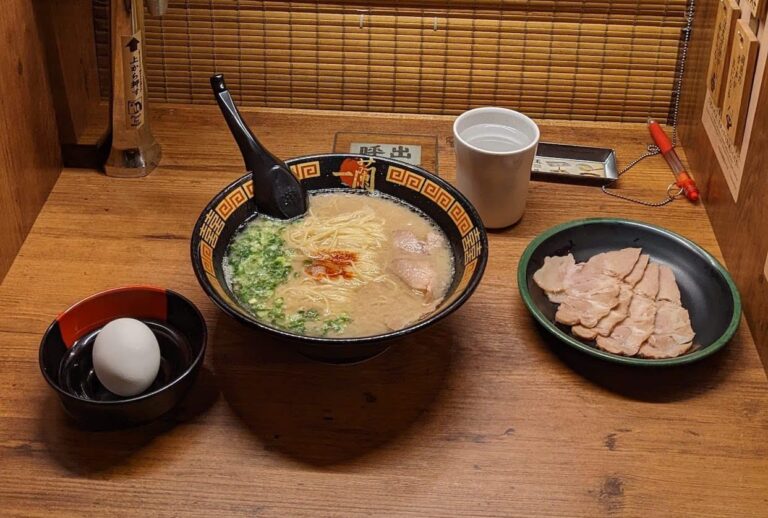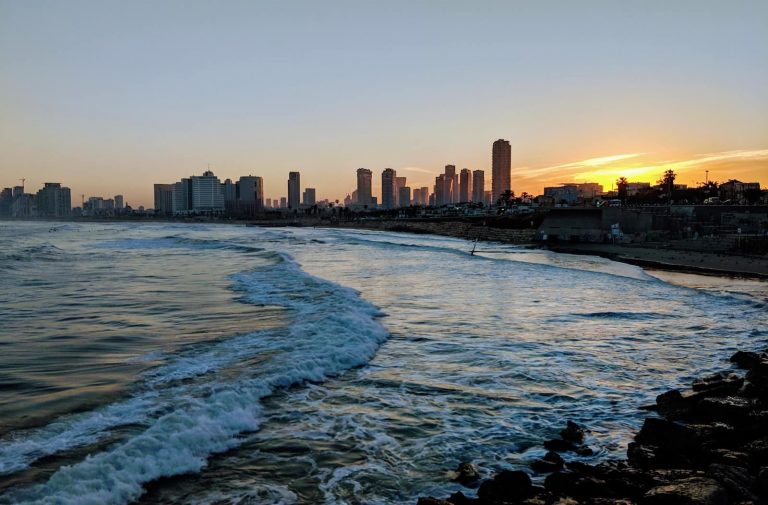How to Blend In (in a Foreign Country)
One of our favourite things to do in foreign countries is just to disappear.
To a degree, how much you can blend in depends on what you naturally look like and how the people around you look. But given that most cities have a diverse range of people of different backgrounds, there are definitely steps you can take to blend in better than your average tourist.
I often wonder about places I’m going to be staying in for a while:
- How can I adapt my language and accent so that I don’t stick out?
- How should I dress so I look like I’m part of the scenery?
- What do everyday people do that are different from things people do where I’m from?
Below is a bit of an exploration about what we do.

Contents
Why Blend In?
Blending in is a great way of getting an insider’s view on a foreign culture.
When I arrive in a foreign country, one of the first things I often hear is:
- “Taxi? Where are you going?”
- “Ma’am? Sir? Do you need accommodation?”
- “Tour? Lowest price in the country! Sir? Ma’am?”
It can really change your first impression of a place. Can’t blame people; they’ve got to hustle. But it’s just the tip of the iceberg of any country’s economy.
To really understand a place and what it’s about, it’s important to spend time with people. Of course, you can spend a lifetime in any place and still not “get” it. Even ethnographers and historians dedicate themselves to just a sub-sub-section of anywhere!
I really like to feel “at home” anywhere I go. It’s a little bit of a slower pace of travel. I wonder what it’s like to really be like someone from any place I visit.
Different countries have different paces of life, different daily habits, and different noise levels even.
If you’ve grown up in the US, you’re most likely used to shopping in supermarkets. So you might find it interesting to see how people shop in wet markets in Asia, at small grocers in Europe, or at open air markets in Eastern Africa.
A Nordic traveller, used to a very quiet level of public life, will be shocked by the amount of noise in a Chinese or South East Asian restaurant, where noise levels are an indicator of quality.
And of course, people have different standards for what is “normal” dress. Even if you dress appropriately modestly for a different location, everywhere has different norms of ensembles and make-up levels.
Blending into a new culture helps you seee a little bit of it through the eyes of locals. And it also helps you get better prices, better service, and just less hassle as a tourist!
Here are some tips on how to blend in.
Observe and Copy
The first key to blending in is to observe.
Start by sitting in a café at a busy intersection (in a non-touristy location). Or watch from your apartment window, if that’s OK. Watch what people do. What are they wearing? What are they eating or drinking? To whom are they speaking, and how? Are they smoking?
For example, in Egypt, we quickly noticed that men had really well-coiffed hair, and tended to wear plain, darker clothing. Facial hair is the norm.
When people walk in Egypt, they go without a care about anything around them. People will scarcely look about as they cross the road, assuming cars will slow down (which they usually do).
In Japan, people are much more likely to observe intersections, to follow paths, and to generally behave with deference to other pedestrians.
And in Argentina, it’s a mix; cars don’t normally stop at stop signs unless there’s someone walking across the zebra crossing. But if you don’t start walking, they won’t stop!
You can do this anywhere — just sit down, have a cup of the local beverage and watch, take notes and learn.
Mimic Volume and Intonation.
Firstly, get the right volume. If you’re in China, you may have to yell to get a waiter’s attention if you’re in a loud, busy restaurant. It’s not rude. It’s just ineffective not to yell.
In some places, people are quiet (northern Europe, for example). In some places — the more bustling parts of Asia or the US for example — you have to really speak up to be heard.
Secondly, get the right tone, intonation and accent. This applies to whether you speak English or the language of the country.
When you listen to people, learn the mannerisms of the way they speak — the way they pronounce words, the pace of the language, the way it lilts.
If you speak back to them with the same pace and tone, you’re much more likely to be understood. Even better, if you’re speaking the local language, adjusting to the local dialect will help you build trust and confidence.
Speaking Parisian French only works with some audiences; with some others you have to adopt slang, speak with colloquial grammar and shorter sentences.
Formal: Est-ce que vous pouvez m’aider s’il vous plait?
Informal: Tu peux m’aider s’il te plait?
(See our guide to formal vs casual French for more on that topic)
Finally, assume you’re being watched or listened to, and act like it. Keep a low tone (but not too low), don’t feel the need to yell at travelling companions in foreign environments and you’ll draw less attention to yourself.
People probably aren’t watching. But having this attitude will help you blend in to the max.
Know the Area and Walk with Purpose
This is a tip from Newsrep, purportedly advice given to CIA officers. But it’s also common sense.
Tourists tend to look around, eyes agape, taking in every new detail. This is fine the first time (everything is cool!) but it does draw attention to you as a target.
If you have time, look over a map in detail to understand the different suburbs and where to walk and not to walk. Before trips, don’t just look up the route in Google Maps; plan the whole route if you can, memorising intersections, crosswalks and where to go.
Then, walk with purpose. Eyes forward, just absorbing your periphery. This is if you truly want to blend in. It doesn’t matter if you don’t mind being a tourist.
But blending in means fewer people will mark you as a target to sell things to you, rob you, or kidnap you (it does happen!).
In fact, once you blend in, people are likely to ask you for directions. I always try to respond, even when I’m rusty in the language and don’t even know the area well and have to use my phone. It’s good fun!
Added bonus: When your data on your phone goes south, you’ll still know where you’re going.
Dress Neutrally
It’s super tempting to take our latest hipster fashion on a new trip. Unfortunately, this is usually a recipe for standing out — unless you’re going to a hipster city like Brooklyn, Berlin, or Melbourne.
Before going to a place, it’s fun to have a quick look on Instagram or Tiktok to see what people are wearing. Then, take those kinds of clothes.
Typically, we pack very light. We take “normal” clothes: pants, plain t-shirts, sneakers, flip-flops. Women get more liberty of course and what women wear depends a lot on local trends.
Sometimes we look at Google Images, and just look up things like “Taiwan crowd” or “Egypt street”.
Once you’re there, if you venture to any of the shopping districts you can also buy local clothes.
Something I like to do (as a person with short hair, who gets it cut once a month or so) is to get a local haircut. I looked about three times as Israeli after I let a local barber have at me. Same with Argentina, Italy, and other places where I blend in easily.
Learn Local Courtesy
You don’t have to learn a language to blend in. But local courtesies and greetings are very important.
After years of living in Asia, it becomes hard to not do a few things everyone does there: hand things over with two hands, give a slight bow when you hand a business card over, and, oh, have business cards.
In Argentina, I had to get used to doing a “kiss hello” on the cheek with other men, even in my “Fight Club” gym. I got to quite like it. Men rarely get to show affection in many cultures!
In Italy, we had to learn dining etiquette. What drinks go with what? When do you eat pizza with hands? Things like that. And of course, many Americans are unused to the idea of placing cutlery to indicate they’re finished with a meal.
Then there’s tipping culture. This is mostly America vs The World, but it does have a lot of regional variation.
Learn Basic Phrases and Pleasantries
You do not have to learn a language to blend in. But it’s nice to learn at least basic phrases to be polite.
For example, many cultures have a “General politeness” expression. In Italy it’s Prego, in Arabic it’s tafaDDal, in French it’s Je vous en prie (or Allez-y), and in Persian it’s berfarmaiid.
It’s nice to learn those words, when to use them, and how to modify them for who you’re talking to (e.g. age/seniority or gender).
Beyond that, everyday greetings go a long way. Some cultures have loads of them, including call-and-response exchanges that can go on for a while. Getting into those is fun!
Informal or Formal?
Everywhere we go, people insist that their culture is quite “informal”. But I usually find this means that they’re informal about some things, but quite strict about others.
For example, in Italy, dining and food etiquette is quite well-regulated. Don’t get a cappuccino other than in the morning! Or in Asia, don’t walk around barefoot (something common in more “surfer culture” parts of the world). Even monks have sandals.
The thing I find interesting is to figure out what people have strict rules about, and to learn about them. I found it pretty interesting diving deep into Argentinian yerba mate culture, for example.






